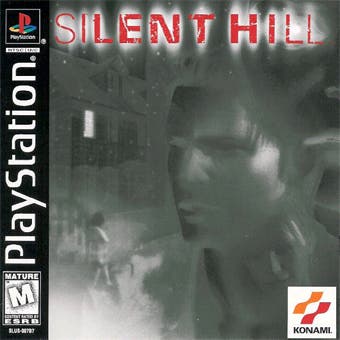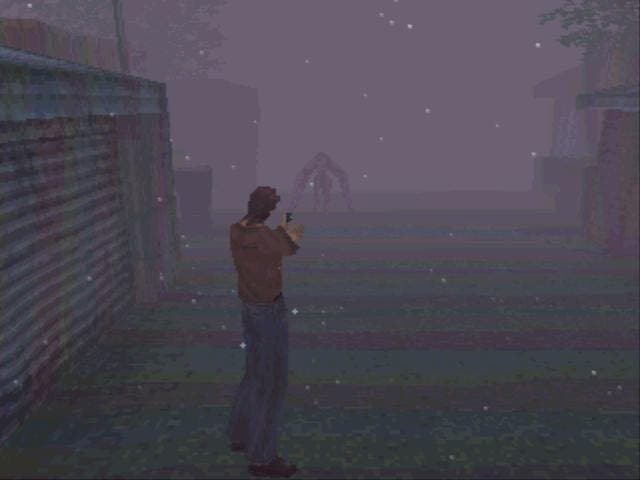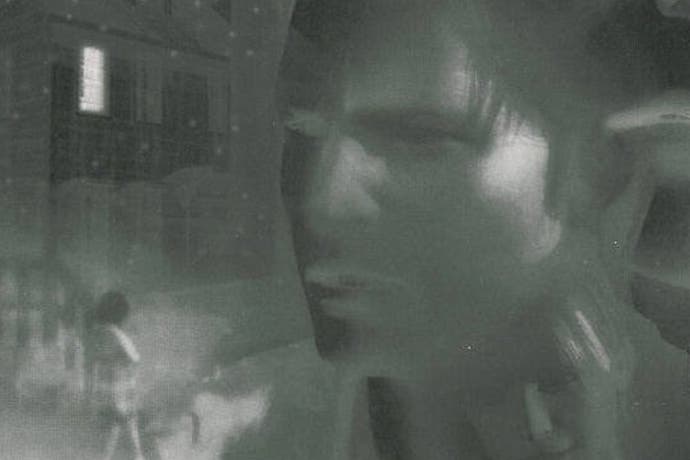Silent Hill retrospective
(When You Wake) You're Still In A Dream.
Silent Hill has always felt like picking through the broken glass of a particularly paranoid dream. You know the framework, and possibly some of the specifics, but peering into the bleakness may not be such a smart idea. You probably won't enjoy what you find lurking, but you embrace the hurt regardless.
Like every game with blood trails and logic puzzles, it gets casually lobbed into the survival horror slop bucket, but Team Silent always seemed to have a lot more in the tank than cheap scares and unhinged corporate dudebros. There's a lore to be unpicked, a mystery to be solved, and unfathomable weirdness beyond the fog.

This was an adventure born from darker obsessions. From the West: King and Koontz novels, Lynch and Kubrick movies, Bosch, Brueghel and Dali art. From the East: Morohoshi and Ito comics, and a pinch of Yanagita folklore. From these labyrinthine influences, something fresh emerged in January of 1999.
Entering its world of perpetual unease was to surrender yourself to days of troublesome wandering, guiding the weary Harry Mason in search of his lost seven-year-old daughter. Where she went, or why she fled the scene remained largely unanswered. All you could establish with any certainty was that a) it was hella foggy out, b) people liked to lock doors then hide the keys in random locations, c) feral dogs and winged beasties wanted you for lunch, and d) everyone apart from a lone female police officer appeared to have gone on holiday.
But in your role of concerned adult, it was your parental duty to delve ever deeper into every available abandoned building on the off-chance that "Cheryl" emerged holding a kitten. The reality of this perpetual object hunt was simultaneously tedious and compelling.
The tedium came from the curious adventure game tradition of forcing players to scour every part of every location for anything not nailed down (and any odd contraption that was). Regardless of how obscure it might have seemed at the time, you quickly learned not to discount anything, and to read all of the notes tossed asunder and riddles scrawled on walls. At some point, pretty much everything had a purpose - it was always simply a question of figuring out what it was.
At least some benevolent soul at Team Silent had the good sense to helpfully mark any checked door on the in-game map (er, providing you'd found the map first, of course - if not, tough). You became thankful for the tiniest crumb of mercy, and the process of chalking off which doors were permanently locked, or just requiring a key somewhere became an odd compulsion. The payback was to sink ever deeper into the game's dark heart; the crumbs of narrative intrigue pulled you ever onwards, with credible, crafted cut-scenes that were a cut above the shamelessly hammy schlock we routinely endured in the 90s.

But the trump card in Team Silent's pack was the peerless audio direction from the relatively unknown Akira Yamaoka. It's a testament to his achievements that much of what we hear in Silent Hill has become the template for any suspenseful horror title that followed, and experiencing it 15 years on is just as chilling as it ever was.
It wasn't just a cheap scare tactic, mind. The eerie, grinding, screeching static from your radio provided an ingenious early warning system that could reliably pinpoint an enemy's position (particularly via headphones) even when you couldn't see them. And with each enemy given a different signature sound, you could even tell what you were about to face - and then relive them later as you clanked around the metal gantries of your worst nightmares.
Yamaoka was clearly a mighty tunesmith, too, and contributed an impressively deranged soundtrack, including the skittering theme tune, and an industrial soundscape that complemented its unsettling brand of horror perfectly. His input cannot be overstated, and it's fair to say Silent Hill would not have been the same game shorn of his talents.
Silent Hill also deserves a nod of appreciation for helping to set the tone for the series' visual signature, especially given the technologically stunted confines of the original PlayStation. Even at 240p, Team Silent's artists did a fine job of making the most of the PSX's crippling limitations, with the fog helping to mask the extremely limited draw distance, and allowing it to produce relatively large scrolling environments - something most other games didn't bother attempting until the next generation rolled around.

But it was perhaps in the claustrophobic confines of the internal locations, and the squalid hellishness of the game's alternate dimension (the 'otherworld'), where the Silent Hill's importance and influence can be felt most keenly. Admittedly, the textures look like an impressionistic QD wallpaper - but blur your vision, party like it's 1999 and let Yamaoka's demonic audio wash over you as you stove a pickaxe into a hell nurse's head. Nor should anyone pretend that the boss creatures look like anything more than a gaggle of unruly polygons, but they're still going to mess you up.
Playing Silent Hill is a punishment-reward relationship that's definitely worth the effort - partially to unravel the unhinged storyline, but also to unlock some of the more enticing secrets: four different endings, dependent on saving key characters, as well as an utterly bizarre UFO ending. (Or, you know, just look them up on YouTube.) And for the really committed, the game even lets you plug a Konami Justifier light gun into your PlayStation to unlock the Hyper Blaster weapon - and then upgrade that via even more playthroughs. Because only the coolest kids ever got to use the Green Hyper Blaster, right?
Given its now-legendary status, perhaps the most surprising thing about the Silent Hill story is that it was a bit a of a fluke that it even got made in the first place. Yamaoka once admitted that Team Silent was originally comprised of staff that had "failed" at other Konami titles before they ended up at the 'CS 6th department' (the official internal name for the team). Even then, Yamaoka reportedly said some members were looking to leave the company before Silent Hill blew up into one of the Konami's key titles. In its infinite wisdom, Konami split up 'Team Silent' in 2004 and the dream was over - but not before it had left an unmatched legacy.









